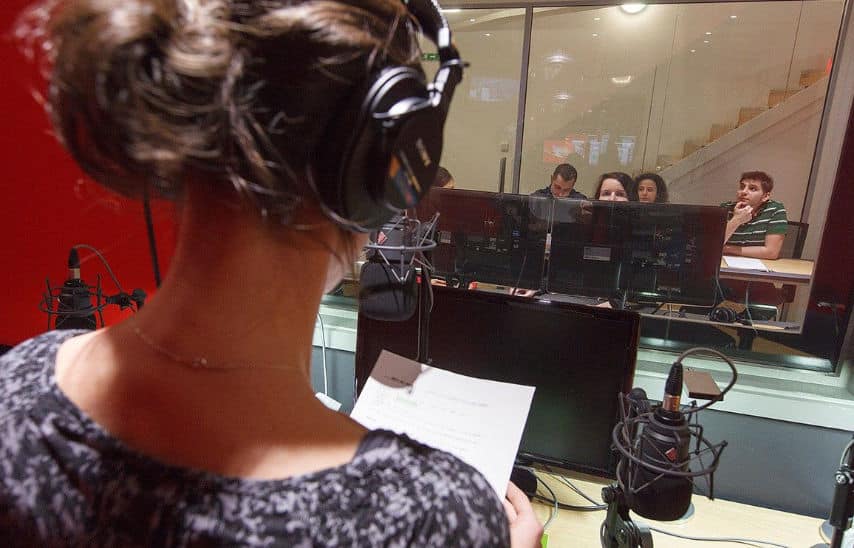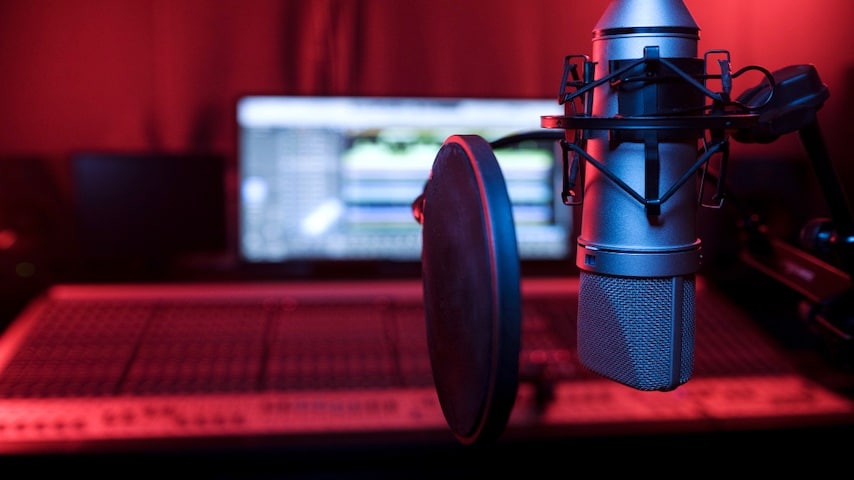The human voice, in all its diverse forms, serves as a profound instrument of expression, capable of conveying emotions, character, and depth. Amongst the myriad of vocal qualities, the raspy voice stands out with its distinct texture and emotive resonance. Characterised by a rough, scratchy, or hoarse timbre, a raspy voice transcends mere auditory experience, often evoking a sense of rawness and authenticity. This unique vocal attribute has found its place in various realms, from the gravelly tones in music that touch the soul to the captivating voices in cinema that define characters.
In the sphere of voice over work, a raspy voice can be an invaluable asset, imbuing narratives with a distinctive edge and depth. It is a sought-after quality in many genres, ranging from animated films to compelling documentaries. The impact of a raspy voice is not confined to its auditory appeal; it also carries a visual and emotional weight that enhances the storytelling process.
This article delves into the world of raspy voices, with a special emphasis on ‘female actresses with raspy voices’ and ‘male actors with raspy voices’. These specific focuses allow us to explore how this unique vocal quality has shaped careers and left an indelible mark on the landscape of performance arts. From iconic female actresses whose husky voices have become their signatures to male actors whose raspy tones lend an air of gravitas to their roles, we will uncover the nuances and significance of this compelling vocal trait.
Through this exploration, we aim to provide insights into the art and science behind the raspy voice, its applications, and its influence in various fields, thereby offering a comprehensive understanding of this fascinating vocal phenomenon.
Table of Contents
ToggleUnderstanding a Raspy Voice
The raspy voice stands out in the realm of vocal qualities with its unmistakable rough, scratchy, or hoarse tone. This unique sound embodies a certain rawness and texture, starkly different from the typical clear or melodious voice. At the heart of a raspy voice lies the irregular vibration of the vocal cords. Unlike the uniform vibrations that produce a smooth sound in normal speech or singing, a raspy voice emerges when the vocal cords become swollen, irritated, or fail to close completely, leading to that characteristic gravelly quality.
The development of this distinct vocal feature can be naturally occurring, often influenced by genetic factors, or it can be acquired. External influences such as excessive vocal strain, smoking, or exposure to irritants can lead to the development of a raspy voice. While some individuals deliberately cultivate this quality for artistic reasons, it’s important to recognise that it might also signal underlying vocal health issues.
Distinguishing a Raspy Voice in Performance, it offers a depth and ruggedness not found in clearer, smoother voices. A raspy voice imbues performances with sincerity and a raw emotional edge, often adding a layer of complexity and intrigue. This is particularly evident in the fields of acting and singing, where such a voice can profoundly affect character portrayal and musical expression.
Contrasting with a breathy voice, characterised by a softer, airier sound, a raspy voice brings a more grounded and textured feel. It’s not just about airflow but the unique texture produced by the vocal cords. Moreover, it differs from a nasal voice, which resonates more in the nasal cavities, resulting in a sharper, sometimes higher-pitched tone.
A raspy voice is a standout vocal quality, defined by the unique way the vocal cords interact and vibrate. It’s this distinction in sound and emotional impact that makes raspy voices so appealing and versatile in various artistic and professional contexts. Understanding these nuances is crucial in appreciating the distinctive nature and the breadth of expression that a raspy voice can bring to performances.
The Science Behind a Raspy Voice
The raspy voice, a distinctive element in the spectrum of vocal sounds, is deeply rooted in the complex workings of the human vocal apparatus. To fully grasp this unique vocal quality, an exploration into the anatomy and function of the vocal cords, located within the larynx, is essential. These bands of muscle tissue are crucial in voice production, vibrating to create sound as air is expelled from the lungs.
Typically, the vocal cords are smooth and flexible, allowing for a diverse range of pitches and tonal qualities. During speech or singing, these cords vibrate in a coordinated manner, shaping the sound that emerges. The quality, pitch, and volume of the voice are influenced by the physical characteristics of the vocal cords, such as their length, tension, and mass, as well as by the force and amount of air passing through them.
A raspy voice arises from a disruption in this normally smooth process. When the vocal cords experience irregular vibrations, the sound produced takes on that characteristic raspy or gravelly quality. This irregularity can stem from various conditions:
- Swelling or inflammation, often due to ailments like laryngitis, causes the vocal cords to swell, altering their usual vibrations.
- Nodules or polyps, resulting from repeated strain or overuse of the voice, are small growths that form on the vocal cords, leading to a raspy sound by interfering with normal vibration.
- In some cases, the vocal cords may not close completely, allowing air to escape through the gap, further contributing to the raspy quality of the voice.
The development of a raspy voice is influenced by an array of factors. Lifestyle choices such as smoking and excessive alcohol consumption can have detrimental effects on the vocal cords. Similarly, vocal strain from prolonged speaking or shouting, as well as certain medical conditions like allergies, respiratory infections, and acid reflux, can affect vocal cord health. Furthermore, natural changes in the vocal cords due to ageing can lead to alterations in voice quality, including the emergence of a raspier tone.
Understanding the science behind a raspy voice is crucial; it underscores the importance of maintaining good vocal health. This is especially vital for individuals who use their voices professionally. Being mindful of one’s vocal habits and seeking medical advice for persistent changes in the voice are key steps in preserving the health and longevity of the vocal cords.
The development of a raspy voice is a complex interplay of physiological factors, lifestyle choices, and potentially underlying medical conditions. While it can be an appealing vocal quality in various artistic fields, its cultivation and maintenance should be approached with care and awareness, always prioritising the long-term health of the vocal cords.
Raspy Voices in Pop Culture
The raspy voice has established a unique place in the world of music, film, and television, symbolising a blend of raw emotion and authenticity. This distinct vocal quality has been embraced by a variety of artists and actors, influencing not only their individual styles but also leaving a lasting imprint on the broader cultural landscape.
Influence in Music
In the music industry, a raspy voice often symbolises emotional depth and an unfiltered expression of the soul. Artists famed for their raspy voices have left an indelible mark across genres, from rock and blues to soul and pop. The late Janis Joplin, with her piercingly raw and powerful raspy tones, captured the spirit of the 1960s rock scene. Similarly, Rod Stewart’s gravelly voice, a hallmark of his enduring career, adds a unique character to his music, resonating with authenticity and lived experience.
Impact on Film and Television
In the realms of film and television, a raspy voice often imbues characters with added complexity and gravitas. It can suggest ruggedness, wisdom, or even a mysterious allure.
- Female Actresses with Raspy Voices: Many female actresses have made the raspy voice a defining feature, enriching their performances with depth and character. Scarlett Johansson’s husky voice, for example, brings a unique presence to both her live-action and animated roles, capable of conveying a spectrum of emotions from seductive allure to introspective depth. Emma Stone is another notable actress whose distinctive raspy voice has become an integral part of her charm and versatility, enabling her to embrace a wide range of roles with a distinctive edge.
- Male Actors with Raspy Voices: For male actors, a raspy voice often signifies strength and authority. Clint Eastwood’s gravelly tone has become synonymous with his tough, no-nonsense screen personas. Meanwhile, Morgan Freeman’s deep, resonant raspy voice has made him one of the most recognised and trusted narrators in the industry. These actors have leveraged their raspy voices as more than just a tool for characterisation, but as a key element of their lasting appeal.
The Raspy Voice as a Cultural Symbol
The appeal of raspy voices extends beyond their sound; they represent authenticity and resilience, standing out from polished, conventional vocal styles. This distinct quality has led to a cultural fascination with artists and actors who possess it, often elevating them to iconic status.
In summary, raspy voices have profoundly influenced music, film, and television, shaping perceptions and appreciations of characters and performances. Whether through the soulful strains of a singer or the commanding presence of an actor, a raspy voice adds a unique dimension to artistic expression, deeply resonating with audiences worldwide.
Iconic Female Actresses with Raspy Voices
The raspy voice has long been a defining feature for many female actresses, significantly enhancing their charisma and screen presence. These actresses, with their unique vocal quality, have brought an authentic depth to their roles, making a lasting impact on both audiences and the industry.
Scarlett Johansson
Scarlett Johansson stands as a prime example of a female actress with a raspy voice. Her deep, husky voice is as iconic as her performances, adding layers of intrigue and allure to her characters. Johansson’s versatility and captivating presence are evident in roles from “Lost in Translation” and “Her” to her portrayal of Black Widow in the Marvel Cinematic Universe. Her raspy voice complements her strong screen presence, infusing her characters with a unique depth that resonates with audiences.
Emma Stone
Emma Stone is another celebrated actress whose raspy voice has been integral to her charm and success. Her slightly gravelly voice exudes warmth and engagement, contributing to her status as one of Hollywood’s most beloved actresses. In films like “La La Land” and “The Help,” Stone showcases her ability to convey a spectrum of emotions, from vivaciousness to vulnerability, using her distinctive voice to enhance her performances.
Kathleen Turner
Kathleen Turner’s deep, raspy voice became a hallmark of her career, distinguishing her in both film and stage roles. Known for her performances in “Body Heat” and “Romancing the Stone,” Turner’s voice adds a dimension of strength and sensuality to her characters, showcasing the versatility and lasting appeal of her vocal quality.
Impact on Roles and the Industry
These iconic actresses have demonstrated that a raspy voice is more than just a vocal trait—it is a powerful tool in characterisation. Breaking away from the stereotype that female characters should have soft, melodious voices, they present strong, complex, and multifaceted individuals.
This vocal quality has empowered female actresses to explore a broader range of roles, challenging traditional norms and expectations within the industry. It lends a layer of realism and relatability to characters, making them more memorable and impactful. As a result, these actresses have not only garnered individual acclaim but have also influenced the portrayal of women in media, paving the way for more diverse and authentic representations.
In conclusion, female actresses with raspy voices have effectively harnessed their unique vocal attributes to elevate their performances and leave a lasting mark on the film and television industry. Their success highlights the value of embracing and leveraging one’s distinctive qualities, demonstrating how they can be transformed into assets in a highly competitive field.
Prominent Male Actors with Raspy Voices
The entertainment industry has been significantly shaped by male actors whose raspy voices have not only defined their careers but also profoundly impacted audiences and cinematic storytelling. These actors have leveraged their distinct vocal qualities to bring added depth, intensity, and authenticity to their performances, leaving an indelible mark in the world of film.
Morgan Freeman
Morgan Freeman is an iconic figure closely associated with a deep, resonant, and raspy voice. His calm, authoritative tone has made him a popular choice for narration, bringing a sense of wisdom and gravitas to his roles. In films like “The Shawshank Redemption” and “Million Dollar Baby,” Freeman’s voice conveys complex emotions, establishing him as a respected and enduring figure in Hollywood.
Clint Eastwood
Clint Eastwood’s gravelly, raspy voice has become a defining aspect of his tough, stoic characters, especially in Western and action genres. His voice, coupled with his compelling screen presence, has given life to some of cinema’s most memorable characters. Films like “Dirty Harry” and “Unforgiven” are testament to how his voice enhances the ruggedness and authenticity of his roles, making him a seminal figure in these genres.
Sam Elliott
Sam Elliott, known for his deep, slow-drawing raspy voice, is a beloved actor, particularly celebrated for his roles in Western films. His voice exudes natural ruggedness and sincerity, integral to roles in “The Big Lebowski” and “A Star Is Born.” Elliott’s voice has enabled him to personify the quintessential American cowboy, making him a unique and recognisable figure in film.
Impact on Cinema and Characterisation
These prominent male actors with raspy voices have shown how this vocal trait can enhance character portrayal, adding realism and relatability. Their voices often embody strength, experience, and a sense of world-weariness, aligning perfectly with specific roles.
Furthermore, the presence of a raspy voice in male actors often challenges the conventional hero archetype, offering more nuanced and layered portrayals of masculinity. This allows for a depiction of strength that transcends the physical, delving into emotional and psychological depths.
Male actors with raspy voices have had a significant influence on the film industry. Using their unique vocal qualities, they have crafted memorable performances and redefined traditional character archetypes. Their influence extends beyond their individual roles, shaping how characters are written and perceived in modern cinema.
Raspy Voice in Voice Over Industry
In the diverse and dynamic world of the voice over industry, the raspy voice occupies a special place. Valued for its emotive depth and unique character, this vocal trait enhances a wide range of content, making it a sought-after quality for various projects.
Demand and Applications in Voice Overs
- Animation and Video Games: Raspy voices often breathe life into gritty and rugged characters in animation and video games, adding layers of complexity to both protagonists and villains. This vocal quality can bring an edge of realism and intensity to fantastical worlds.
- Commercials and Promotions: In the advertising realm, a raspy voice is effective in crafting memorable and impactful messages. It often conveys a sense of authenticity and reliability, resonating with audiences and adding depth to the brand narrative.
- Narration and Documentaries: The raspy voice finds a significant role in narration and documentaries, where it adds gravitas and sincerity. This vocal quality draws listeners in, enhancing the storytelling experience and connecting more deeply with the audience.
Versatility of Raspy Voices
Artists with raspy voices can convey a broad spectrum of emotions, ranging from warmth and intimacy to authority and intensity. This adaptability makes them valuable across various voice over contexts, allowing them to tailor their vocal delivery to suit different roles and scenarios.
Challenges for Voice Over Artists
Maintaining a raspy voice, particularly over extended recording sessions, can pose challenges. Artists must manage their vocal health to prevent strain and ensure the consistent quality of their raspy tone across projects. The unique nature of a raspy voice sometimes masks underlying health issues, requiring artists to be vigilant about their vocal care.
Both Male and Female Talents
The voice over industry benefits from the talents of both male and female artists with raspy voices. Male artists often bring strength and authority with this vocal trait, while female artists can use it to challenge stereotypes, portraying powerful and complex characters. This diversity enriches the industry, offering a broader palette of voices to meet the varied demands of different projects.
In the voice over industry a raspy voice is more than just a vocal characteristic—it’s a storytelling tool, a means to engage audiences, and a way to bring characters to life. The versatility and emotional depth of raspy voices make them highly sought after, despite the challenges they present. Voice over artists, both male and female, who possess this trait, are valuable for their ability to infuse narratives with a unique and compelling quality.
Techniques to Develop a Raspy Voice
Developing a raspy voice for professional or personal reasons requires a mindful approach, ensuring that it’s done healthily and sustainably. For those looking to safely cultivate this distinctive vocal quality, here are some practical tips and techniques, woven together to guide you through this unique vocal journey.
Vocal Exercises and Techniques
Engaging in vocal fry is a key technique for developing a raspy voice. This involves lowering the voice to its deepest register, creating a creaky, raspy sound. It’s essential to use this technique in moderation to avoid straining the vocal cords. Alongside, controlled breathing exercises play a crucial role. They help manage the airflow and pressure on the vocal cords, vital in nurturing a raspy tone. Additionally, humming and resonance exercises aid in discovering the right placement and resonance for a raspy voice, often focusing on the chest and throat areas to modulate the voice’s texture.
Lifestyle Adjustments for Vocal Health
A vital aspect of developing a raspy voice is maintaining the health of your vocal cords. Hydration is paramount; ensuring the vocal cords are well-hydrated is crucial. This involves not just drinking plenty of water but also avoiding substances like caffeine and alcohol that can dehydrate. Avoiding harmful substances like smoking is critical, as these can cause significant damage to the vocal cords. Regular vocal rest is equally important to prevent overuse and strain, preserving the vocal cords’ longevity and health.
Seeking Professional Guidance
Collaborating with a professional voice coach offers invaluable tailored advice and safe techniques for developing a raspy voice. They can also monitor your progress, ensuring you’re nurturing your voice without risking damage. For those using their voice professionally, regular check-ups with an ENT specialist or a speech therapist are advisable to maintain optimal vocal health.
Mindful Practice and Diet
Practicing mindfully is crucial. Being aware of your vocal limits and stopping to rest if you experience any pain or discomfort during practice is essential. A healthy diet supports overall health, including that of the vocal cords. Moderation in consuming foods that can cause acid reflux, like spicy or acidic foods, is recommended.
In summary, developing a raspy voice can be an enriching addition to your vocal abilities, but it’s imperative to approach this process with care and mindfulness. Balancing the aspiration for this specific vocal quality with the need to maintain long-term vocal health is key. By following these integrated tips and techniques, and seeking professional guidance when necessary, you can explore and develop a raspy voice in a safe and sustainable way.
Maintaining a Healthy Raspy Voice
For individuals graced with naturally raspy voices or those who have cultivated this trait for professional reasons, prioritising vocal health is essential. A healthy approach not only ensures the longevity of your voice but also prevents potential damage. Here’s an integrated guide to the key practices and considerations crucial for preserving the health of a raspy voice.
Embracing Regular Vocal Hygiene
Maintaining a healthy raspy voice starts with regular vocal hygiene. Central to this is hydration; keeping the vocal cords well-hydrated is crucial for vocal health, necessitating consistent water intake throughout the day. In drier climates, using a humidifier can prevent the vocal cords from drying out. Additionally, it’s important to limit the intake of substances like caffeine and alcohol that can dehydrate the vocal cords.
Mindful Vocal Use
Mindful use of your voice plays a significant role in maintaining its health. This includes being cautious about overusing your voice. Regular breaks are essential to give your vocal cords time to rest and recover. Also, speaking at a comfortable pitch and avoiding extremes in volume, like yelling and whispering, can help prevent undue stress on the voice.
Lifestyle Choices Impacting Vocal Health
Your lifestyle choices have a direct impact on the health of your voice. Refraining from smoking is critical, as smoking can cause significant damage to the vocal cords. A healthy diet that avoids foods causing acid reflux can benefit your vocal cords. Furthermore, ensuring adequate rest and engaging in regular physical exercise are foundational for overall health, which, in turn, supports vocal health.
Seeking Professional Care
For those using their voice in a professional capacity, regular check-ups with a voice specialist or an ENT doctor are paramount. These visits are crucial for monitoring and maintaining vocal health. In addition, voice therapy with a speech-language pathologist or voice therapist can offer targeted exercises and strategies to maintain the health of your raspy voice.
Vocal Warm-Ups and Cool-Downs
Treating the vocal cords with care before and after use is essential. Engaging in vocal warm-up exercises prepares the vocal cords for extended use, while cool-down exercises help relax the vocal cords after heavy usage, preventing strain.
In summary, preserving a healthy raspy voice involves a blend of good vocal practices, mindful usage, healthy lifestyle choices, and professional care. Whether your raspy voice is a natural attribute or a developed skill, taking care of it ensures that you can continue to utilise this unique vocal quality effectively and sustainably.
Case Studies and Interviews: Insights from the World of Raspy Voices
Delving into the world of raspy voices through the lens of those who possess this unique vocal trait offers invaluable insights. By exploring the experiences, challenges, and successes of voice coaches, as well as male and female artists known for their raspy voices, we gain a deeper understanding of this distinctive quality.
Insights from a Voice Coach
We spoke with an experienced voice coach specialising in helping artists develop and maintain a healthy raspy voice. They emphasised the importance of understanding one’s vocal limits and the necessity of regular vocal exercises. The coach highlighted the challenges artists face in maintaining a raspy voice, particularly the risk of vocal strain and the importance of vocal hygiene. Their advice for artists includes regular check-ups with a voice specialist and a balanced lifestyle to support vocal health.
The Journey of a Female Actress with a Raspy Voice
One case study revolves around a well-known actress renowned for her distinctive raspy voice. She shared the initial challenges she faced in the industry, where some directors preferred more conventional voices. However, she turned this into an advantage by selecting roles that suited her unique vocal quality. Her raspy voice set her apart, enabling her to land memorable roles and build a distinguished career.
Experiences of a Male Actor with a Raspy Voice
Another perspective comes from an actor whose raspy voice has become his trademark in action and drama genres. He discussed how his raspy voice has been both a blessing and a challenge. While it has given him an edge in certain roles, it has also necessitated extra vigilance regarding his vocal health. His advice to aspiring actors with raspy voices is to embrace their uniqueness but also be mindful of the demands placed on their vocal cords.
Voice Over Artist’s Raspy Voice Journey
A voice over artist shared her journey of using her raspy voice for various animation and commercial projects. She described learning to modulate her voice to suit different characters and scenarios and the techniques she uses to maintain her vocal health. Reflecting on the growing acceptance and demand for unique vocal qualities like hers, she encourages others to find and nurture their distinct voice.
These case studies and interviews offer a comprehensive view of the world of raspy voices, revealing the complexities of possessing this vocal trait, the challenges in maintaining it, and the unique opportunities it presents. These stories underscore the importance of embracing and caring for one’s natural voice, highlighting the raspy voice as a valuable asset in the diverse landscape of vocal performance.
Raspy Voice in Different Genres of Performance
The raspy voice stands as a unique and versatile element in the world of performance, weaving its distinctive texture across various genres. From the intensity of drama and film to the imaginative realms of animation and video games, this vocal quality adds depth and authenticity, profoundly enhancing the audience’s experience.
In the World of Drama and Film
In dramatic roles across film and theatre, the raspy voice often injects a layer of complexity and realism. It can express a character’s world-weariness, ruggedness, or troubled past, making them more relatable and multifaceted. The raspy voice finds a special place in film noir and thrillers, where it brings an air of mystery and intrigue, often fitting perfectly with hard-boiled detectives or enigmatic characters. In dramatic films, it’s used to convey emotional depth and resilience, contributing significantly to powerful and moving performances.
Animation and Video Games
In the dynamic spheres of animation and video games, a raspy voice breathes life into characters, often becoming a defining trait. Animated films benefit from raspy voices to create distinctive and endearing characters, from wise mentors to roguish heroes. In the world of video games, these voices often belong to strong, battle-hardened characters, enhancing their toughness and charisma.
The Impact in Theatre
Theatre, with its live and intimate nature, sees the raspy voice as particularly impactful. In classical plays, including Shakespearean works, a raspy voice adds a fresh dimension to traditional roles. Meanwhile, modern theatre often utilizes raspy voices to reflect more realistic and diverse characters, moving beyond stereotypical theatrical tones.
Musical Performances
In the music industry, singers with raspy voices often stand out, their vocal texture adding a layer of emotional depth to songs. In genres like rock and blues, the raspy voice is celebrated for its raw energy and emotional expression. In more intimate genres like jazz and soul, it adds warmth and closeness, forging a deeper connection with the audience.
Voice Over Work
The field of voice over work, spanning commercials, documentaries, and audiobooks, sees the raspy voice as a key element in engaging listeners. In commercials, it conveys sincerity and trustworthiness, enhancing the appeal of products or services. For documentaries and audiobooks, the depth and gravitas of a raspy voice captivate the audience, enriching the storytelling experience.
The raspy voice, in its varied applications across different performance genres, emerges as a remarkably versatile and impactful tool. Whether adding emotional depth in drama, bringing animated characters to life, or conveying authenticity in voice over work, a raspy voice significantly enhances the artistic expression and audience experience. Its ability to convey a wide range of emotions and characters cements its status as a valuable asset in the diverse world of performance arts.
The Future of Raspy Voices in Entertainment
As the landscapes of entertainment and voice over industries continue to evolve, the role and perception of raspy voices are poised for intriguing transformations. With shifting audience preferences, technological advancements, and an increasing appreciation for diverse vocal qualities, the future of raspy voices in entertainment appears both promising and dynamic.
Evolving Trends and Predictions
There’s a noticeable shift towards more authentic and diverse forms of entertainment, which is likely to increase the demand for unique vocal qualities like raspy voices. This trend is expected to be particularly evident in genres such as independent film, edgy animation, and immersive video games. As the industry moves towards breaking traditional voice casting norms, artists with distinctive voices, including those with a raspy tone, will find more opportunities in a variety of roles. This change is part of a broader movement towards diversity and inclusion in entertainment, providing a platform for raspy voices that have often been underrepresented or typecast to find a more diverse range of roles and representations.
Technological Advancements Shaping the Future
Advances in voice modulation software are set to allow artists to experiment with and perfect their raspy voices without causing strain or damage. The role of artificial intelligence and voice synthesis in voice over work is also growing. AI-generated voices with a raspy quality could be used across various applications, offering consistency and versatility. Additionally, technologies designed for vocal health monitoring will aid artists in maintaining a healthy raspy voice. These could include apps that track vocal usage and provide warnings when strain is detected, ensuring the longevity and sustainability of the artist’s voice.
Innovations in Voice Training
The understanding of the human voice is ever-expanding, leading to the development of new techniques in vocal training. These techniques, focusing on the overall health and versatility of the voice, including the development of a raspy tone, are emerging as holistic approaches to voice training. Customised voice coaching, aided by technology and a deeper understanding of vocal qualities, will enable artists to develop and maintain their raspy voice more effectively and healthily.
Looking ahead, the future for raspy voices in entertainment and the voice over industry is bright and filled with potential. As societal norms and technologies continue to advance, we can anticipate seeing these unique voices used in more creative and varied ways, breaking traditional boundaries and stereotypes. With these advancements in technology and a growing appreciation for diverse vocal tones, the raspy voice is set to become an even more integral and celebrated part of the entertainment landscape.
FAQs
What causes a raspy voice?
A raspy voice can be caused by an inflammation or irritation of the vocal cords, which can result in a change in pitch or tone. Some people are born with a naturally raspy voice, while others may develop it over time due to various factors such as smoking, allergies, or overuse of the voice.
Can anyone develop a raspy voice?
Yes, most people can develop a raspy voice to some extent through vocal exercises like vocal fry. However, the extent to which you can change your natural voice depends on individual vocal cord structure and health. It’s important to approach this process under the guidance of a professional voice coach to avoid damaging your voice.
What would cause a raspy voice?
A raspy voice can be caused by a variety of factors. Common causes include inflammation or irritation of the vocal cords, often due to conditions like laryngitis, excessive vocal strain, smoking, or exposure to irritants. Sometimes, a naturally raspy voice can be a characteristic of an individual’s vocal cords. Other factors like allergies, respiratory infections, acid reflux, and certain medical conditions can also contribute to a raspy voice.
Is a raspy voice good for voice over work?
A raspy voice can be both an asset and a hindrance in the voice over industry, depending on the project and the desired effect. It can be a valuable asset for certain types of voice over projects, such as commercials or movie trailers that require a strong and memorable voice. However, it may not be the best choice for other types of voice over work, such as audiobooks or e-learning courses that require a clear and consistent voice.
What famous singers or actors have raspy voices?
Many famous singers and actors have utilised a raspy voice in their performances, including Tom Waits, Scarlett Johansson, Morgan Freeman, Janis Joplin, Rod Stewart, and Christian Bale.
Can a raspy voice be harmful to the vocal cords?
While a raspy voice itself is not harmful to the vocal cords, using unhealthy methods to achieve a raspy voice, such as smoking or straining the vocal cords, can cause long-term damage to the voice. It is important to achieve a raspy voice through healthy methods and to take care of the vocal cords to avoid long-term damage.
Is a raspy voice always natural, or can it be acquired?
A raspy voice can be both natural and acquired. Some individuals are born with a naturally raspy voice due to their unique vocal cord structure. Others may acquire it over time through certain lifestyle choices or professional vocal use, as seen with many artists and performers.
How do female and male raspy voices differ in the industry?
In the industry, female artists with raspy voices are often noted for adding depth and a sense of intrigue to their characters, breaking away from traditional feminine voice stereotypes. Male artists with raspy voices are frequently associated with ruggedness and authority. Both are highly valued for their distinctiveness and emotional depth.
What are the risks of artificially developing a raspy voice?
Artificially developing a raspy voice without proper technique and guidance can lead to vocal strain, nodules, and long-term damage to the vocal cords. It’s crucial to follow safe practices and consult with voice professionals.
How can I maintain my natural raspy voice?
Maintaining a natural raspy voice involves regular vocal rest, staying hydrated, avoiding smoking and other harmful substances, and practicing good vocal hygiene. Regular check-ups with an ENT specialist or voice therapist can help monitor your vocal health.
Are raspy voices more prone to vocal problems?
Raspy voices can be more prone to vocal problems if not properly cared for, as they may be the result of vocal strain or misuse. Regular vocal rest, hydration, and avoiding harmful practices are key to maintaining a healthy raspy voice.
Why is my voice raspy but my throat doesn’t hurt?
Experiencing a raspy voice without throat pain can occur when the vocal cords are slightly irritated or swollen, but not enough to cause discomfort. This can happen due to mild vocal strain, dehydration, or environmental factors like dry air or pollutants. In some cases, it might be a natural variance in your voice, especially if you are not experiencing any other symptoms of illness or discomfort. However, if the raspiness persists, it’s advisable to consult a healthcare professional to rule out any underlying issues.
Can voice training improve my raspy voice for singing?
Yes, voice training can help you control and enhance your raspy voice for singing. A vocal coach can teach you techniques to use your raspy voice effectively while minimizing the risk of damage.
Is it harder for voice over artists with raspy voices to find work?
Not necessarily. While some projects may require a more traditional voice, there is a growing demand for unique and distinctive vocal qualities, including raspy voices, in various types of voice over work.
Can technological tools help in developing a raspy voice?
Technological tools like voice modulation software can assist in experimenting with raspy tones. However, they should not replace natural voice development techniques and professional guidance.
Contact us today to learn more about our services and how we can help bring your production to life with a memorable and impactful voice over performance.






















